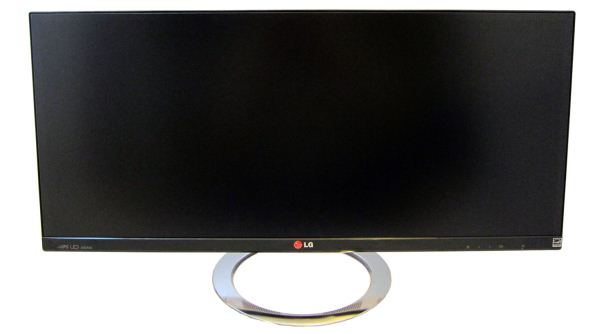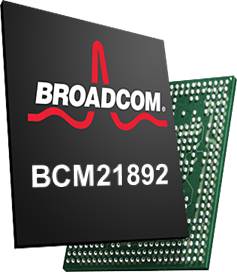 LG 29EA93 Monitor Review - Rev. 1.25
I really dislike writing negative reviews. Writing one means that I’ve spent a good deal of time with a product while not enjoying the experience. It means that a team of engineers and designers has spent a lot of time working on something that didn’t make the cut, or they made a series of compromises for some reason that led to an end user experience that was unsatisfying. I’d much rather write effusive praise of a wonderful product that people should run out and buy than write something bad.
Typically when I write a negative review, I either hear a little feedback from a company, or nothing at all. Maybe they knew the product wasn’t great but released it anyway, or they didn’t care. Sometimes I hear that a company will fix something, and then I try to hold onto hardware and test that to see if they do, but I’ve never had feedback like I did from LG after I initially reviewed their 29EA93 ultra-widescreen monitor.
I had multiple emails full of detailed questions about how I test, what I was after, and what should be done to improve upon the current version. After all of these conversations, they flew out an engineer with an updated version of the 29EA93 that they said would address almost all of my issues with the first version. Did LG manage to go back and correct the problems that I found, so that the monitor now performs much better? I had to go ahead and test it to find out.
LG 29EA93 Monitor Review - Rev. 1.25
I really dislike writing negative reviews. Writing one means that I’ve spent a good deal of time with a product while not enjoying the experience. It means that a team of engineers and designers has spent a lot of time working on something that didn’t make the cut, or they made a series of compromises for some reason that led to an end user experience that was unsatisfying. I’d much rather write effusive praise of a wonderful product that people should run out and buy than write something bad.
Typically when I write a negative review, I either hear a little feedback from a company, or nothing at all. Maybe they knew the product wasn’t great but released it anyway, or they didn’t care. Sometimes I hear that a company will fix something, and then I try to hold onto hardware and test that to see if they do, but I’ve never had feedback like I did from LG after I initially reviewed their 29EA93 ultra-widescreen monitor.
I had multiple emails full of detailed questions about how I test, what I was after, and what should be done to improve upon the current version. After all of these conversations, they flew out an engineer with an updated version of the 29EA93 that they said would address almost all of my issues with the first version. Did LG manage to go back and correct the problems that I found, so that the monitor now performs much better? I had to go ahead and test it to find out.
Times are Changing: Intel Building an IPTV Service + Box The most interesting things at CES were the things that weren't at CES. While I'll discuss the others in due time, one notable absence from CES was the often rumored Intel set-top box. Erik Huggers, the head of Intel's new Media division, confirmed today that Intel was working on a complete IPTV solution: service, software and hardware, all to be sold direct to consumers. Erik confirmed that Intel Media was an all new group within Intel, staffed with folks from Apple, Netflix and Google among other places. Erik himself came from the BBC's Future Media & Technology group. Intel seems to know that it can't pull something like this off using internal talent alone. Bring in smart outsiders then give them the support of Intel seems to be the approach here - and it makes sense. Details are scarce, and I'd expect them to be for quite some time. Intel committed to launch the box and service this year and it'll support features like catch-up, video on demand as well as live TV - all delivered over the internet. A list of content providers as well as pricing are two notable bits of information that were missing from today's disclosure. Until we get closer to launch, I wouldn't expect to hear anything on either front. Intel did mention that this wasn't a value play, and there was a strong focus on content bundles, which means this is likely not a full á la carte solution that's going to drive cable TV providers out of business. I'll refrain from speculating publicly here, but there's a lot that makes this interesting. Some questions to ask: 1) Why is Intel getting into the TV business? Why now? 2) If not competing aggressively on pricing, then how will Intel differentiate? 3) Intel's divisions traditionally require high operating margins to survive in the long run. Unlike Intel's smartphone aspirations, its work in the TV space won't have the time to eventually build up steam. Intel also won't have the burden of playing catch up in a quickly maturing industry. The established players in the cable TV space have done a great job of stifling innovation for quite a while. It's clear that a more revolutionary approach is necessary to liberate live TV content. The question is whether or not Intel can be the first company to succeed where others have failed. Many expected Apple to be the first to tackle and succeed here. Perhaps Intel will beat them to the punch? (this helps answer question #1 above). More thoughts on this later.
Broadcom Announces BCM21892 - Their First 4G LTE-Advanced Baseband It was teased at this year's CES demonstrating VoLTE calls, we saw it working in a reference design, and today, Broadcom is finally ready to make their first LTE-enabled baseband official, dubbed BCM21892. This is again Broadcom's eagerly anticipated launch LTE baseband, and supports a pretty impressive set of features for their first entry. BCM21892 includes support for GSM/EDGE, WCDMA up to HSPA+ 42.2 (DC-HSPA+), TD-SCDMA for China, and UE Category 4 (150 Mbps on the downlink) LTE-Advanced with both TDD and FDD duplex modes. There's no CDMA2000 1x/EVDO which is pretty much expected, but more on that in a moment. BCM21892 is a 3GPP Release 10 part, which is again the LTE-Advanced release that includes things like LTE carrier aggregation inter and intra band. Broadcom tells me they will support carrier aggregation modes for LTE, and WCDMA. MIMO support on BCM21892 is 2x2. In addition, there's support for VoLTE calling (which we saw demonstrated) and 3G fallback modes for migrating that call over to WCDMA and GSM as necessary. In addition Broadcom claims they have enough performance to run an operator's IMS stack entirely on their baseband.
| Broadcom's LTE Baseband | ||||
| BCM21892 | ||||
| Air Interfaces | GSM/EDGE, WCDMA, LTE-A, TD-SCDMA | |||
| 3GPP Release | Rel. 10 (LTE-A) | |||
| HSPA+ Category | Cat. 24, DC-HSPA+ 42.2 Mbps | |||
| LTE | Cat. 4, LTE-A 150 Mbps Downlink / 50 Mbps Uplink 2x2 MIMO | |||
| Voice | IMS/VoLTE, CS WCDMA/GSM voice fallback | |||
| Process | 28nm HPm | |||
| Package | Plastic(?) with integrated DRAM and 8-port Transceiver | |||
| Extra | External PMIC, "35% smaller required implementation area," envelope tracking supported | |||
Available Tags:LG , Intel , 4G ,







No comments:
Post a Comment